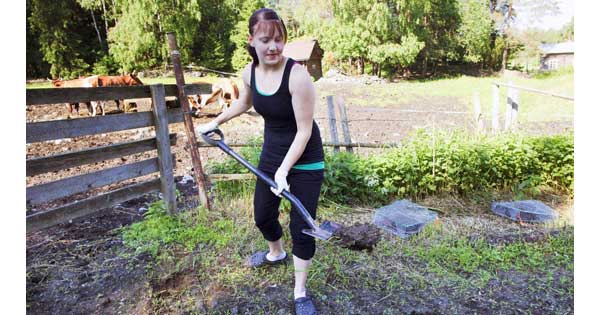
When my mother was a Girl Guide in England—circa 1950—she and her fellow guides went away to weekend camps where they slept under canvas on mattresses of straw (known as paillasses), roasted potatoes on bonfires, and joined together in jolly sing-alongs. They took trips to Epping Forest, a former royal woodland on the northeast edge of Greater London, where they collected acorns and fir cones—but no beetles and “nothing squidgy.” “We felt very adventurous,” my mother told me. But about one thing she was clear: “We would not have wanted to walk into any cow pats, I can tell you that much.”
Times change. In Finland, 79 teenagers from the 4H Federation signed up as “citizen scientists” to measure changes in cow-pat mass during the grazing season. The project was organized by ecologist Tomas Roslin and his colleagues at the University of Helsinki, whose goal was to answer an important question: Just how does a cow pat decompose? And who or what does the decomposing?
This may seem like a quixotic pursuit, but Finland’s one million head of cattle produce some nine billion pounds of dung every year. Dealing with all this excrement is either “an immense waste problem or an enormous ecosystem service, depending on how decomposition works,” Roslin wrote in an email to me.
Each citizen scientist enrolled in the project was told to collect 20 liters of fresh dung from one of 73 cattle farms across Finland. Each volunteer divided his or her sample into 15 pats, set aside five as “bait pats” to sample dung beetles in the area. The remaining 10 were assigned to five further treatments (with two replicates of each). These were placed in a cow pasture where they were exposed to a variety of treatments: open to the elements and local decomposers (dung beetles and earthworms) or encased in coarse or fine mesh cages or placed on cloths that excluded either dung beetles or earthworms or both. Every 10 days for two months, the young scientists weighed the pats and their cages.
Although evaporation and microbial decomposition accounted for more than two-thirds of the dung’s disappearance, insects played a vital role in breaking down the pats: Those protected from the dung beetles and earthworms were heaviest at the end of the experiment. The most efficient invertebrate decomposer, the researchers found, was a large blue-sheened tunneling dung beetle called a dor beetle, sometimes known as a “dumbledore.” Dor beetles removed dung twice as fast as earthworms and smaller dung beetles. The service they provide is invaluable, say the researchers: by feeding and breeding on dung, they help recycle nutrients, spread seeds, control parasites, and aerate the soil.
Also worthy was the service of the citizen scientists, whose contributions reduced the project’s expenses to a quarter of what they otherwise would have been. The teens showed surprising enthusiasm for their unusual enterprise. “While any researcher dealing with dung will be used to all sorts of jokes cracked on their trade, our citizen scientists would … find them derogatory of their important task,” Roslin told me. “I for one very much appreciated their attitude,” he said, as it showed that they had understood “how important a role they played in getting our massive scientific undertaking implemented.”

